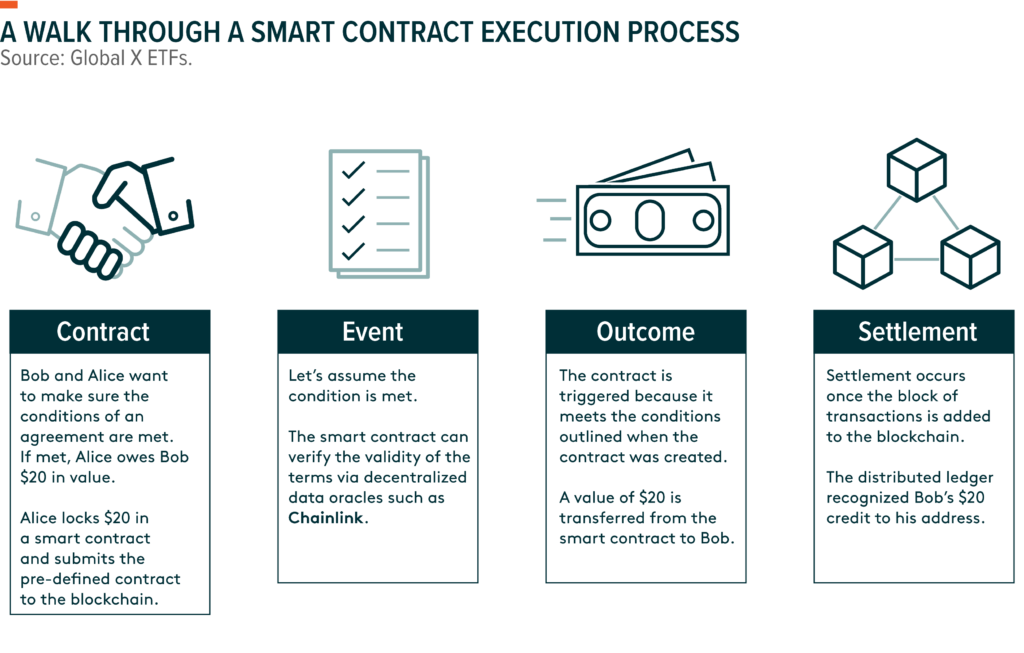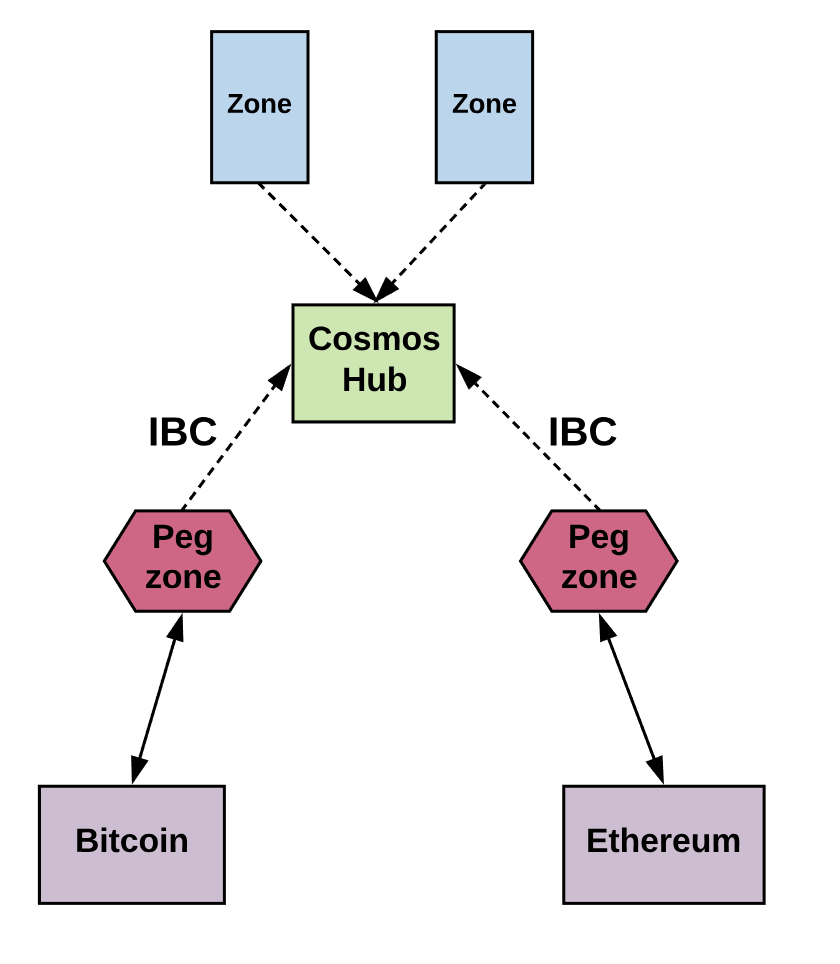- The first application of blockchain dates back to the 1990s, but its complete version debuted in 2009.
- A smart contract is a set of codes that utilizes blockchain technology to automate certain functionalities based on set criteria.
- Blockchain 3.0 also allows for the interoperability of different blockchain networks and existing technology.
The global integration of blockchain technology is a feat we cannot achieve overnight. For instance, it took web2 over two decades to achieve the global feats we enjoy today. Thus, to fulfil this vision, a web3 roadmap was an essential part, ensuring the proper development and transition to blockchain technology. Currently, blockchain developers have proven that the technology is flexible enough to re-incision multiple industries.
To achieve this, blockchain technology had to undergo several iterations similar to web1, web2 and web3. However, the difference between the layers of blockchain technology attributes to its area of applicability. As a result, three versions of blockchain exist, categorized under digital assets, smart contracts and decentralized enterprise-level applications.
This article will highlight the different layers of blockchain technology, focusing on their distinct role within the Web3 road map.
The different layers of Blockchain technology
The web3 industry is a vital element within the fourth industrial age. Developers worldwide have gradually developed the once-infamous industry into a trillion-dollar franchise. The four core elements of web3; NFT, digital currency, AI and the Metaverse have established a new line of thinking. As a result, new markets have emerged, leading to new ways of approaching technology.
Soon it became clear to the masses that web3 held plenty of potential, but it did not come instantly. Like many technological break-through, it experienced many setbacks and flaws throughout its journey. It’s through these trials and errors that blockchain has come to be what it is today. Thus, the need for a web3 roadmap outlined the different layers of blockchain technology, giving it a form that could potentially redefine our take on technology.
Below are the different layers of blockchain technology.
Blockchain 1.0: Digital Currency
Blockchain 1.0, or the first application of blockchain, dates back to the 1990s, but its complete version debuted in 2009. The concept of digital currency shook the very core of the financial industry. We can trace the first iteration of Blockchain 1.0 back to 1991 when Stuart Haber and W. Scott Stornetta developed a thesis called “How to Time-Stamp a Digital Document”.
According to their documentation, they propose a practical procedure that would define the building block of the web3 roadmap; how to certify digital documents. David Mazières and Dennis Shasha would later use their work to develop a study showcasing how digital blocks can store data.

Blockchain 1.0 or digital currency ushered in a new approach to the financial system.[Photo/Medium]
According to them, their improved version, “Building secure file systems out of Byzantine storage,” focuses on the data structure and protocol of a multi-user network file called SUNDR (Secure Untrusted Data Repository). The significant key point in the SUNDR would later become a fundamental attribute showcasing how blockchain stores data in an accessible, immutable and scalable manner.
These works were among the primary inspirations that Nakamoto sued to develop the first checkpoint in the web3 roadmap, Bitcoin.
Also, Read The Evolution of Digital Asset Marketplaces in a Web3 Economy.
Digital currency is the most basic form of a decentralized ledger. Bitcoin was the first among the first breakthrough we had to usher in the fourth industrial revolution. It was an automated electronic cash transfer system. Nakamoto intends for Bitcoin to outpace traditional financial systems by empowering the user directly.
Its system allowed users to exchange digital currency with little-to-no information about the receiver while maintaining strong security. This feat instantly shattered the progress of traditional banking security systems made throughout the years. Blockchain 1.0 in addition, offered a form of digital ownership that the previous system could not offer. Mpesa was among the few innovations at the time that could compare to the revolution Bitcoin envisioned. Its gradual success soon caught the eye of million, leading to the era of the digital age.
The concept of digital currency expanded, leading to the development of Altcoins such as Ethereum, Dogecoin, and Tether. With the presence of competition, the industry progressed gradually as organizations improved their technology to outpace their peers. This struggle for dominance significantly propelled Blockchain 1.0 several years ahead of its time. It also led to the development of blockchain-based ecosystems such as Ethereum.
Blockchain 1.0 served as the starting point of the web3 roadmap. It led to the development of meme-coins, utility tokens and other crypto coins, each struggling to achieve a unique edge over the competition. This ignited the gap of online payments as banks and financial stems soon took to the same stage to salvage their reputation. As a result, Blockchain 1.0 is by far the most successful out of the three layers of blockchain technology.
Blockchain2.0; Smart Contracts
After the success of Blockchain 1.0, many sought a different approach to his technology. At the time, the growing crypto industry still faced numerous critics who pointed out several flaws within the system. Fortunately, it only took four years after the development of Blockchain 1.0 for innovators to apply the technology in other areas.
Vitalik Buterin was the first developer to see the potential of the blockchain and chose to develop Ethereum not as a substitute for Bitcoin but as an improved version. Ethereum showcased the first-ever system that implemented Blockchain 2.0; smart contracts.

An overall explanation depicting the functionalities of a standard smart contract.[Photo/Medium]
In a nutshell, a smart contract is a set of codes that utilizes blockchain technology to automate certain functionalities based on set criteria. These smart contracts went beyond the limitations of Blockchain 1.0, giving a more robust definition to the web3 industry.
Also, Read about The increasingly significant role of blockchain technology in Africa.
Smart contacts allow two parties to automatically execute complex tasks while facilitating the functionalities of Blockchain 1.0. The workings of Vitalik expanded the thought line of many developers. It proved that blockchain could be more than just a distributed ledger system. Smart Contracts formed the first alternate application of blockchain, its capabilities improved its ecosystems, and for a time, many believed that Ethereum would surpass Bitcoin.
Later on, smart contracts would form the basis of decentralized applications. Simply put, the development of smart contacts showcased a different approach to the blockchain, highlighting its feasibility. Soon developers expanded the notion of smart contracts into decentralized applications forming the baseline of its next layer; blcockahin3.0 or decentralized enterprise-level applications.
Blockchain 3.0; Decentralized Enterprise-Level Applications
At the time of writing, we are transitioning into the next layer of blockchain technology; decentralized enterprise-level application. In less than a decade, smart contracts played a crucial role in the web3 roadmap by showcasing that the technology could do far more than automate financial transactions.
Its native security measures, immutable nature and fast processing capabilities inspired many to adopt the technology to improve their sectors. This led to the steady development of decentralized applications that could automate several processes and tasks.

The Inter Blockchain Communication serves as the underlying protocol facilitating communication between different decentralized networks.[Photo/LinkedIn]
It became painfully clear that blockchain had the potential of outpacing web2, and it was during this period that the concept of “web3” dawned on the community. This led to many organizations utilizing blockchain technology, formulating the basis of blockchain 3.0; a decentralized enterprise-level application.
The main difference between the capabilities of Blockchain 2.0 and 3.0 is the sheer scale of applicability. Smart contracts serve as a basic component that expanded the franchise and thus had a limited reach. Decentralized Enterprise level applications, however, serve a much broader audience since they are a proven concept.
Today many decentralized enterprise-level applications encompass industries, like healthcare, cybersecurity, supply chain and manufacturing. To some extent, we can view Blockchain 3.0 as the product of constant innovation accompanied by a high adoption rate.
Also, Read Decentralized finance: Redefining financial transactions in the digital economy.
Blockchain 3.0 also allows for the interoperability of different blockchain networks and existing technology. Prime examples are COSMOS and Chainlink ecosystem, based on the InterBlockchain Communication Protocol. The IBCP allows data transfer between multiple blockchain networks without hindering their individuality. In addition, several decentralized enterprise-level applications co-exist with the web, allowing steady transitioning of the industry.
Blockchain 3.0 uses DAG algorithms, drastically increasing the transaction processing rate when combined with existing technology. Platforms like Solana and Avalanche can execute several thousand transactions every second. This feat has outpaced Bitcoin’s and Ethereum’s capabilities by far.
Conclusion
With Web2 still heavily relied on today, it makes the transition even more difficult. Initially, categorizing the layers of blockchain technology was unnecessary, since we never conceived the concept of web3 until Blockahin2.0. Despite this, each layer has made a significant contribution to paving the way for innovators and entrepreneurs from all over to shine. Achieving the end goal of the web3 roadmap is still far off, but we can take solace in knowing how far we have come.
- SEO Powered Content & PR Distribution. Get Amplified Today.
- PlatoData.Network Vertical Generative Ai. Empower Yourself. Access Here.
- PlatoAiStream. Web3 Intelligence. Knowledge Amplified. Access Here.
- PlatoESG. Automotive / EVs, Carbon, CleanTech, Energy, Environment, Solar, Waste Management. Access Here.
- BlockOffsets. Modernizing Environmental Offset Ownership. Access Here.
- Source: https://web3africa.news/2023/08/06/news/layers-of-blockchain-elaborates-the-evolution-of-web3/
- :has
- :is
- :not
- 1
- 32
- 33
- a
- About
- accessible
- accompanied
- Achieve
- achieving
- addition
- adopt
- Adoption
- After
- age
- ahead
- AI
- algorithms
- All
- allow
- allowed
- Allowing
- allows
- also
- Altcoins
- among
- an
- and
- Application
- applications
- Apply
- approach
- approaching
- ARE
- AREA
- areas
- article
- AS
- asset
- Assets
- At
- attributes
- audience
- automate
- Automated
- automatically
- Avalanche
- back
- Banking
- Banks
- based
- Baseline
- basic
- basis
- BE
- became
- become
- believed
- between
- Beyond
- Bitcoin
- Block
- blockchain
- Blockchain networks
- blockchain technology
- blockchain-based
- Blocks
- breakthrough
- broader
- Building
- but
- by
- called
- CAN
- cannot
- capabilities
- Cash
- categorizing
- caught
- certain
- certify
- chain
- Chainlink
- chose
- clear
- codes
- Coins
- combined
- come
- Communication
- community
- compare
- competition
- complete
- complex
- component
- conceived
- concept
- constant
- contacts
- contract
- contracts
- contribution
- Core
- Cosmos
- could
- criteria
- Critics
- crucial
- crypto
- Crypto Coins
- Crypto Industry
- Currency
- Currently
- Cybersecurity
- DAG
- data
- Data structure
- Dates
- David
- debuted
- decade
- decades
- decentralized
- Decentralized Applications
- decentralized networks
- define
- definition
- depicting
- Despite
- develop
- developed
- Developer
- developers
- Development
- DID
- difference
- different
- difficult
- digital
- digital age
- Digital Asset
- Digital Assets
- digital currency
- digital ownership
- directly
- distinct
- distributed
- Distributed Ledger
- do
- documentation
- documents
- Dogecoin
- Dominance
- drastically
- during
- each
- ecosystem
- Ecosystems
- Edge
- Electronic
- element
- elements
- emerged
- empowering
- encompass
- end
- enjoy
- enough
- ensuring
- Enterprise
- enterprise-level
- entrepreneurs
- Era
- Errors
- essential
- established
- ethereum
- Ethereum's
- Even
- Every
- evolution
- examples
- exchange
- execute
- exist
- existing
- expanded
- experienced
- explanation
- eye
- faced
- facilitating
- far
- FAST
- feat
- few
- File
- finance
- financial
- financial system
- financial systems
- First
- first-ever
- flaws
- flexible
- focuses
- focusing
- For
- form
- formed
- formulating
- Fortunately
- four
- Fourth
- franchise
- from
- functionalities
- fundamental
- gap
- Giving
- Global
- goal
- gradual
- gradually
- Growing
- had
- Have
- healthcare
- heavily
- Held
- High
- Highlight
- highlighting
- his
- How
- How To
- However
- HTTPS
- IBC
- immutable
- implemented
- improve
- improved
- in
- In other
- increasing
- increasingly
- individuality
- industrial
- Industrial Revolution
- industries
- industry
- information
- initially
- Innovation
- innovations
- innovators
- inspired
- instance
- instantly
- integration
- intends
- Interoperability
- into
- IT
- iteration
- iterations
- ITS
- journey
- jpg
- just
- Key
- Knowing
- later
- layer
- layers
- leading
- Led
- Ledger
- ledger system
- less
- Level
- like
- limitations
- Limited
- Line
- made
- Main
- Maintaining
- MAKES
- manner
- manufacturing
- many
- map
- marketplaces
- Markets
- masses
- max-width
- measures
- Metaverse
- million
- more
- most
- much
- multiple
- nakamoto
- native
- Nature
- Need
- network
- networks
- never
- New
- next
- NFT
- Notion
- numerous
- Nutshell
- NYU
- of
- off
- offer
- offered
- on
- online
- online payments
- only
- or
- organizations
- Other
- our
- out
- outlined
- over
- overall
- overnight
- ownership
- part
- parties
- Paving
- payments
- period
- Platforms
- plato
- Plato Data Intelligence
- PlatoData
- played
- Plenty
- Point
- potential
- potentially
- Practical
- presence
- previous
- primary
- Prime
- procedure
- processes
- processing
- Product
- Progress
- progressed
- propelled
- proper
- propose
- protocol
- proved
- proven
- put
- Rate
- reach
- Read
- Redefining
- repository
- reputation
- result
- Revolution
- road
- roadmap
- robust
- Role
- same
- scalable
- Scale
- scott
- Second
- Sectors
- secure
- security
- Security Measures
- see
- serve
- serves
- set
- Setbacks
- several
- shine
- shook
- showcased
- showcasing
- significant
- significantly
- similar
- simply
- since
- smart
- smart contract
- Smart Contracts
- Solana
- some
- soon
- sought
- Stage
- standard
- Starting
- steady
- stems
- Still
- store
- stores
- strong
- structure
- Struggle
- Struggling
- Study
- success
- successful
- such
- sued
- supply
- supply chain
- surpass
- system
- Systems
- Take
- tasks
- technological
- Technology
- Tether
- than
- that
- The
- the metaverse
- their
- Them
- These
- thesis
- they
- Thinking
- this
- thought
- three
- Through
- throughout
- Thus
- time
- to
- today
- Tokens
- took
- Trace
- traditional
- traditional banking
- transaction
- Transactions
- transfer
- transition
- transitioning
- trials
- true
- two
- under
- undergo
- underlying
- understanding
- unique
- unnecessary
- until
- use
- User
- users
- uses
- utility
- utilizes
- Utilizing
- version
- versions
- very
- View
- vision
- vital
- vitalik
- W
- was
- Way..
- ways
- we
- web
- Web2
- Web3
- Web3 industry
- went
- were
- What
- when
- while
- WHO
- will
- with
- within
- without
- Work
- workings
- works
- worldwide
- would
- writing
- years
- zephyrnet













